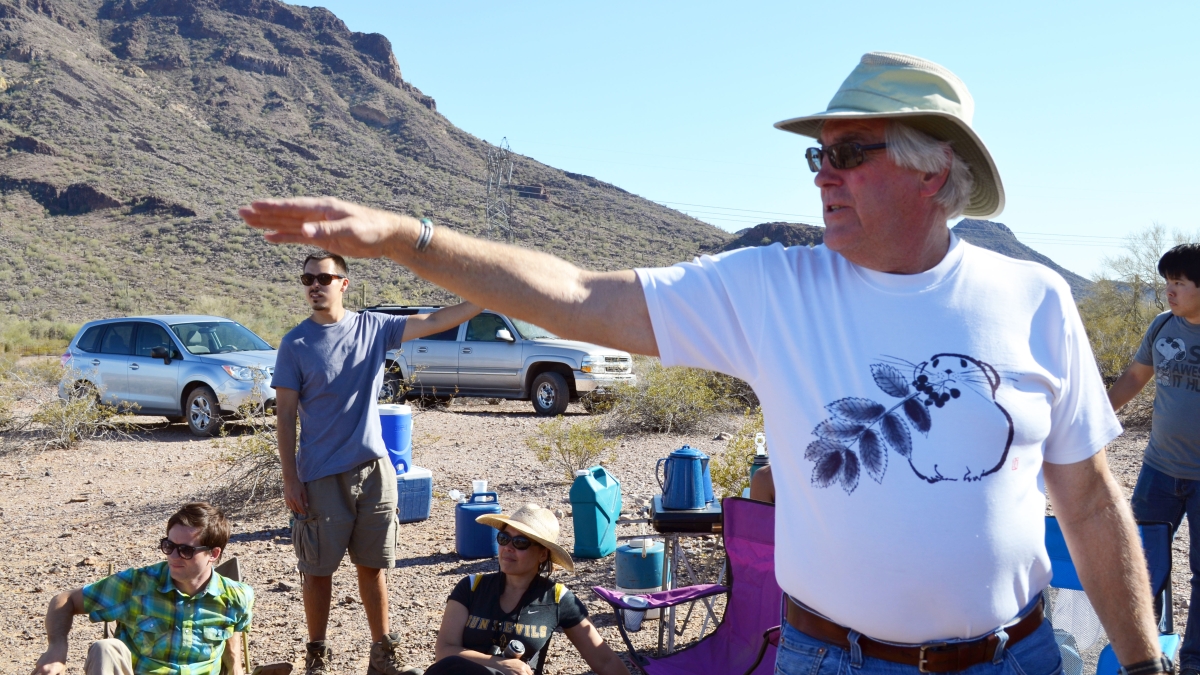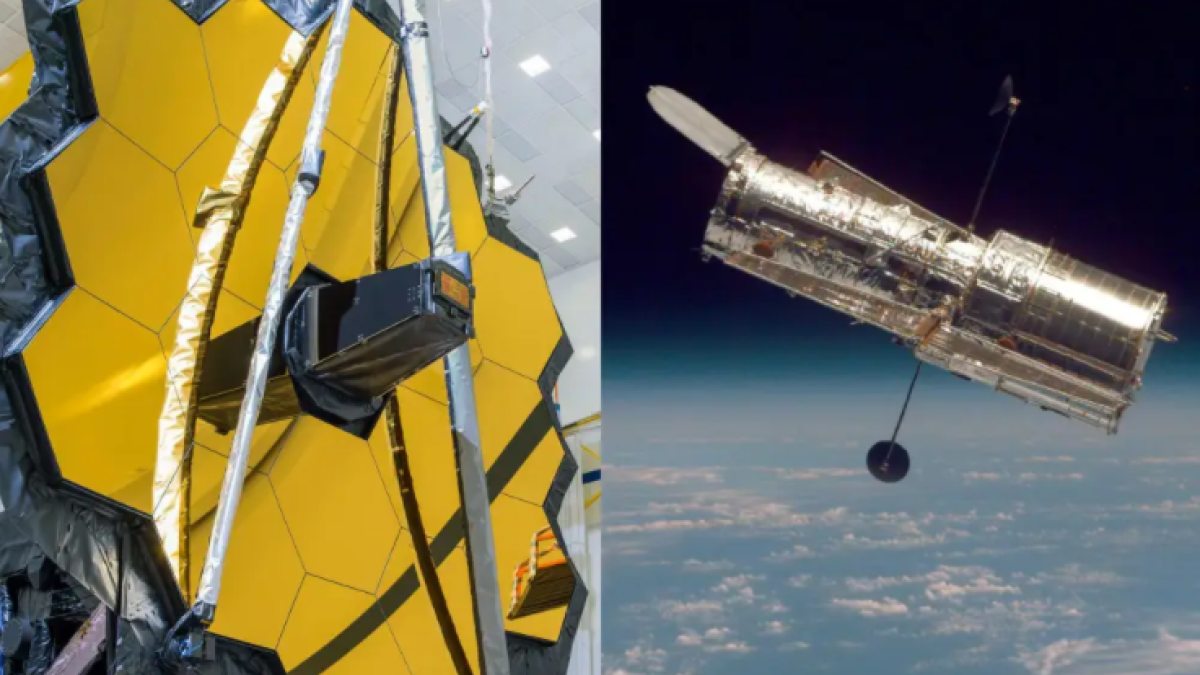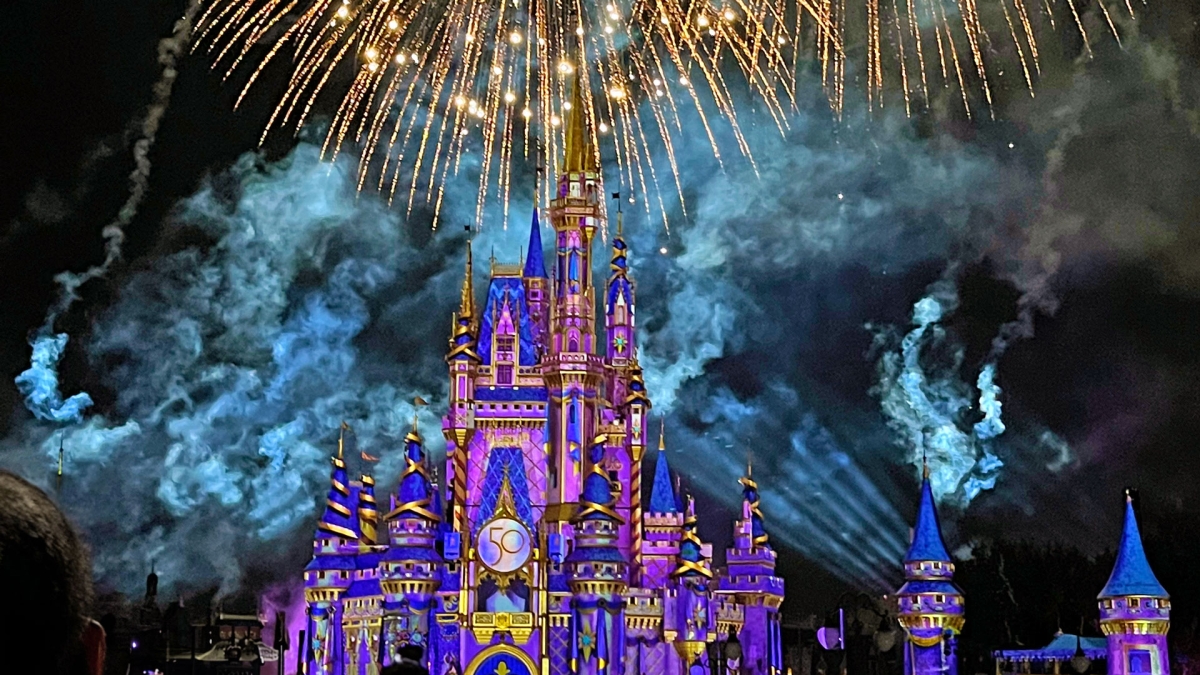'Never take your eyes off the fox'
Before retiring, ASU professor Smith takes students on one last camping trip where he shares his love of fieldwork and animals

“Welcome to the Big Horn Mountains!” says conservation biologist Andrew Smith.
About 60 miles west of Phoenix in a rugged desert range north of Interstate 10, six vehicles disgorge 22 students, two faculty members, and a few others tagging along. In about 45 minutes, dome tents dot the desert hardpan, a heap of firewood has been assembled and a fire ring built.
This is Smith’s last trip taking students out in the field to learn how to trap and handle animals for study. After 40 years, he is retiring. A President’s Professor and Parents Association Professor in the School of Life SciencesThe School of Life Sciences is an academic unit of the College of Liberal Arts and Sciences. Smith is also a distinguished sustainability scientist in the Julie Ann Wrigley Global Institute of Sustainability. at Arizona State University, he specializes in lagomorphs — rabbits, hares and pikas — but knows about pretty much any critter you can name.
“Animals are really phenomenal,” he says.
BIO 410 — Techniques in Conservation Biology and Ecology — is one of the Smith’s most popular classes besides mammalogy. After all, you get to hold a fox and a kangaroo rat.
With camp set up, everyone takes a break and waits. Students toss around a football, munch potato chips and bask in the sun. No one is on a phone. Smith explains the need to wait before setting the rodent traps, so the animals aren’t in there too long. Every technique he discusses with the students is designed to be as considerate as possible to the animals.
Everyone is to mark his or her traplines with neon green flagging tape. When Smith worked in Tibet studying pikas, he spent half a day laying out a perfect grid with the tape. He returned only to find it all gone. The local Tibetan women were quite fond of weaving the colorful tape into their hair and the manes of their yaks. He ended up using yak dung as markers.
The students wander out into the desert and set their traps, baited with grain. In the morning they will hold a few pocket mice and some kangaroo rats.

Nearly two dozen students joined ASU biologist Andrew Smith in the Big Horn Mountains Wilderness west of Phoenix the weekend of April 2.
Photos and video by Samantha Lloyd/ASU
Smith talks about ecological researchers who do computer modeling and never get out of the lab. Isn’t half the allure of the job getting out in the field?
“It is for people like me,” he says.
Smith has been doing field trips “forever.” He began taking out students when he was a teaching assistant. “No one knew I was doing it,” he said. “I just did it. ... I can’t count how many of these I’ve led.”
Smith still has the first backpack he got when he was 9. He grew up in Southern California.
“The beach was sex and drugs at the time,” he said. “So my parents — they were mountain people — let me go up to the mountains. I had them buffaloed.”
The group clambers into the vehicles and drives about a third of a mile out of camp. Out here they’ll set the carnivore traps. Smith gets five groups sorted out, each with three traps baited with bacon and sardines. “No, I want three traps for each group. Leave that trap there.”
“Kit foxes have a great sense of smell, and they can really motor,” he tells the students. They like wide open spaces where they can see predators like bobcats and coyotes a ways off, so he tells them to set a few traps in open areas.
The students file off in different directions, heading for washes and mountain slopes. “It’s a bit like herding cats,” he says, watching them go.
The weekend camping trip is Smith’s last time taking students out in the field to learn how to trap and handle animals for study. After 40 years, the professor who specializes in lagomorphs — rabbits, hares and pikas — but knows about pretty much any critter you can name is retiring.
It’s twilight and long shadows stripe the desert floor. The mountains begin to fade to purple.
His students have gone on to work at the Arizona Game & Fish Department, the Desert Botanical Garden, Saguaro National Park, the Phoenix Zoo and the Arizona-Sonora Desert Museum, among many other places. “Whatever we do is giving them experience to go on and do whatever they’re going to do,” he says.
“They go off in so many different directions now,” he says. “It used to be they all went to Game & Fish.”
Back in camp the fire is lit. As the group wolfs down hamburgers, hot dogs and carne asada, postdoctoral research associate Jesse Senko stands and discusses why Smith is such an inspiration to his students.
“He does it because he wants you out here,” Senko says. “Andrew cares about you guys. His whole purpose is to mentor you guys. I want to take this moment to recognize him for an incredible career. ... You want to know why you do what you do. That’s Andrew. We’re so lucky to have him. ... From pikas to sea turtles to sharks, we’re lucky to have him.”
Teaching assistant Charlie Rolsky takes a break from manning the grill. “It’s rare to find people like him,” Rolsky says. “Let’s toast him!”
In the morning, all the carnivore traps are empty except two, holding a kit fox and a gray fox. Smith shows how to remove them from the traps, and how to hold them. “Never take your eyes off the fox,” he tells the students.
The kit fox is a bit squirmy, so Smith decides to release it early. “Now I’m going to set it down, it’s going to run about 40 or 50 meters, then it’s going to stop and turn around and look at us,” he says.
“Why?” asks a student.
“Because that’s what they do.”
Released, the kit fox performs as predicted. The gray fox being more docile, it enjoys more one-on-one time with the group before it too scurries off, having earned its bacon and sardine supper.
“Way to go, gang!” Smith hails the group. “Good trapping!”
More Science and technology

Celebrating 34 years of space discovery with NASA
This year, NASA's Hubble Space Telescope (HST) is celebrating its 34th anniversary of the world's first space-based optical telescope, which paved the scientific pathway for NASA's James Webb Space…

Making magic happen: Engineering and designing theme parks
The themed entertainment industry is widespread and diverse, encompassing everything from theme parks to aquariums, zoos, water parks, museums and more. The Theme Park Engineering and Design…

AI-equipped feeders allow ASU Online students to study bird behavior remotely
ASU Online students are participating in a research opportunity that's for the birds — literally. Online Bird Buddies is a project that allows students to observe birds remotely, using bird feeders…
